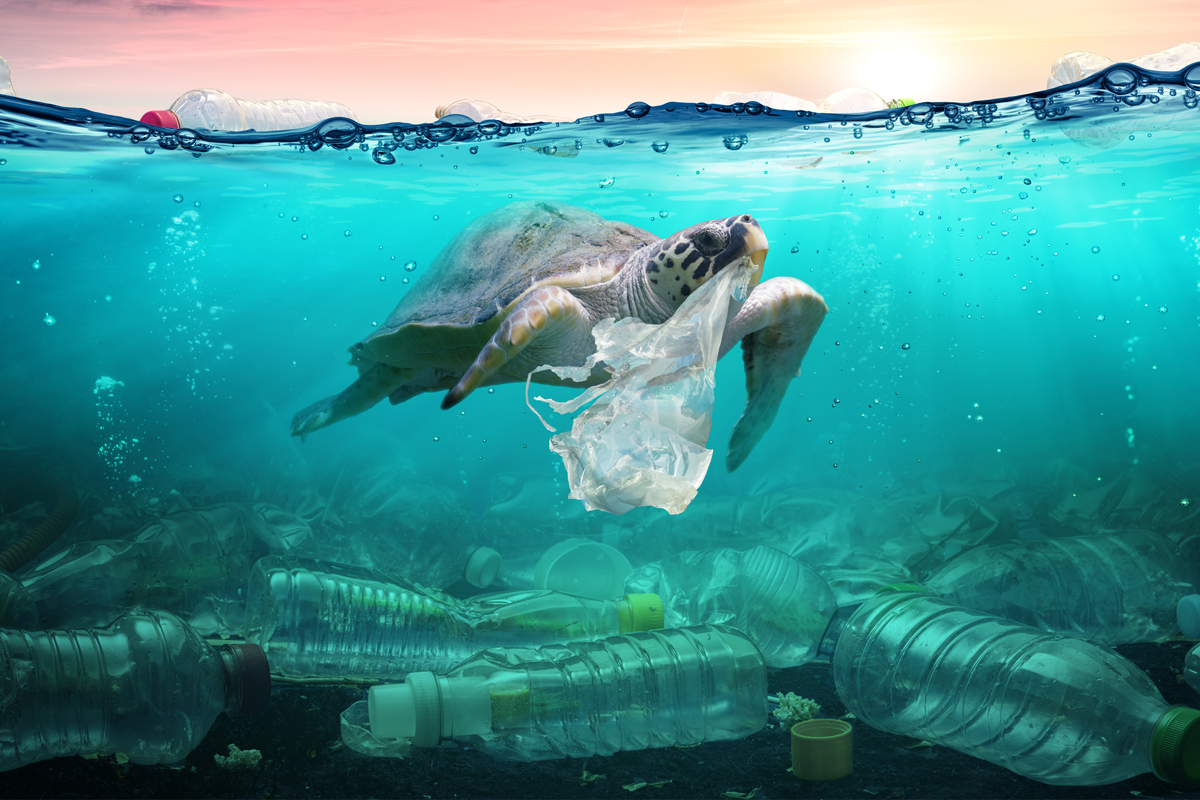Crisis Escalates
As Earth continues to spiral into a climate crisis, the recent revelation of March 2024 marking the 10th consecutive month of record-breaking heat should serve as an unignorable wake-up call.
The ocean is no less than a heritage for our planet. We must ensure to preserve it.

Representational image (IStock)
We live in a planet filled with water; deep, blue and gigantic masses, called oceans. This water that you now see in front of your eyes has a long story, which dates back to the time when the universe was made. Hydrogen being the simplest element was created by the Big Bang right away. But oxygen wasn’t made that instantly. Oxygen came into existence when the huge masses of hydrogen clumped together because of their gravity and created the first stars. The stars were unstable and had a lot of mass in them.
Its inner constituents pulled upon its surface, thereby making the star compress with greater and greater pressure at its core. Such pressures were so great that two hydrogen nuclei fused together in a process called nuclear fusion, which gave rise to a new element in the universe, later known as helium. When this helium and hydrogen were compressed further, again and again, new elements came into existence on the face of the universe.
One such element was oxygen. When the universe settled by and by, stars exploded, and smaller portions of matter were ejected out into the vast cosmos. Various elements combined to form all kinds of compounds. And amongst them one of the compounds, which turned out to be extremely stable was water. And it is because of water’s stability as a compound it could be found as huge chunks of ice floating around in the space in the form of comets, revolving around a star like the planets do.
Advertisement
It has been strongly suggested by scientists that Earth received a huge quantity of water from the comets, which crashed onto the earth’s surface when it was formed. We also believe that water was further formed when the anaerobic bacteria, one of the first living beings to come across the face of this planet, gave off oxygen during respiration. It is believed that huge amounts of that oxygen created by them resulted in the formation of oxygen and ozone in our atmosphere. And when a sufficient quantity of this oxygen reacted with hydrogen in the atmosphere of a newborn Earth, our breath-taking oceans and seas and rivers were formed. Do you remember the days when you used to draw a boat sailing on a sea and used to colour the water blue?
When you grew up, you must’ve realised that ‘it is actually colourless’. However, that’s a wrong notion. Water is a diamagnetic compound whose colour is actually a very faint shade of blue. And apart from its colour, the oceans will also tell you that water doesn’t really allow ‘all’ the light to pass through it either since it’s a polar solvent. And these are only some of the beautiful and fascinating properties of water that makes us wonder: “What’s down there?”
To find the answers we started with the surface. On the surface one can find the smallest virus and the largest Blue Whale. The numerous species of dolphins and turtles, which hunt and migrate in these clear blue waters can also be found swimming away throughout their life. Once we started going deeper into the oceans, the water pressure built up and we found out that feeble beings like us can only dive so little.
And we are yet to know what it is like, right at the very bottom of our planet’s thin crust. But as of now, we have indeed gone to some mysterious depths where no light can reach. Since the mammals like the whales and dolphins need to breath, they don’t really go very deep, they always ensure that they can come up for air. But since the fishes have their gills, they do not care much about going back to the surface.
And as we go down the ocean’s light blue surface, past the sharks and corals, the colour deepens and gets more and more black. It gets cold and the huge amount of water pushes the bodies of those who live there from all directions with a lot of effort. So, nature allowed such animals to develop stronger bones and muscles. If an individual was born as one of those creatures, that person’s experience of swimming up to the surface would be similar to the experience of going upto the exosphere without a space suit. In that darkness, life is completely different. Food is scarce and autotrophic mode of nutrition is replaced by chemotrophic nutrition. Bioluminescence is used to draw prey and to mate and life in that dark abyss is extremely difficult. But unfortunately, so are the lives above the darkness in the water. With an increase in human population, pollution isn’t the only thing harming the oceans. We are simply consuming too much food. As a result of which the inhabitants of the ocean are not being able to hunt properly. Starvation and death have led many marine animals towards the verge of extinction. Our planet’s life, the water, the oceans face a grave threat. We obviously can’t just completely stop fishing, but we can have limitations and control over fishing in the oceans and also rely more on fishes, which are ‘farmed’.
The ocean is no less than a heritage for our planet. If it could talk, it would’ve told us tales far more mysterious, ridiculous and absurd than the thousand and one Arabian Nights. So let’s ensure that the next generations can enjoy the ocean’s cool, soothing blue waters as much as we do, so that they can explore and learn more about the blue ocean that makes our planet.
Advertisement